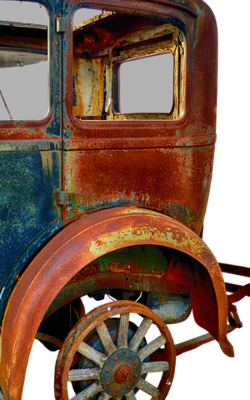Festivals And Food
Festivals And Food


When and how the custom of celebrating festivals is originated is the subject of history.
But we can certainly say that it is for showing the gratitude towards God, also need of socialising in community, region or I would say enthusiasm in people about gathering of families and friends and also celebrating the success of their hard work.
Like in our country the main occupation was farming. Where farmers do their job and leave the outcome in God and nature's hands so it is all uncertain. If timely and sufficient, not more not less, rains will give good crops and so when things are positive they're happy so there is a reason to celebrate. And to come out of their daily routine they dress up in new and traditional colourful dresses also singing and dancing is all part of the celebration. And though they had limited resources but their enthusiasm and religious spirit used to be so high that they used to not leave anything that is required to celebrate and show their joy and happiness.
Even when our grandparents and parents have religiously with lots of enthusiasm and how much ever they can afford to do they used to do and celebrate festivals with smiling faces, which nowadays the next generation won't have that much strength and patience to make preparations and which the earlier generations have shown.. nowadays everyone prefers readymade things, which has taken away the charm of festival celebrations.
Food is an important part of festival celebrations. And in Hindu religion, we believe that God has first right on food that we prepare on special occasions like festivals. that is why we offer food to God which is called "Naivedya" , " Bhog".
If we start from January then the first festival that comes is " Makar Sankranti", "Uttarayan"
based on the transition of the sun. Since it comes in the winter season, sesame and jaggery which are freshly found and is also good for health both items are good for winter so sweet balls, "laddu" is made from sesame and jaggery. Sesame is a source of calcium and jaggery has iron, vitamins and minerals. Also, vegetables are found in plenty in winter so a mixed vegetable is prepared.
This festival is also for kite flying.
In South India, Tamil people celebrate "Pongal"
Which is not related to any particular religion but it is thanksgiving ceremony to thank the spirit of nature, Sun, and animals like bulls for assistance in a successful harvest. celebrated by singing songs, playing games and making
Rangoli, a drawing with colours and colourful flowers are made by ladies. A sweet dish called "Pongal" is made of newly harvest items like rice, moong dal, milk, fresh coconut and jaggery. A thick liquid kind of food decorated with dry fruits. And this is prepared by the eldest person in the family and all other members of the family assist them. This is also offered to God first and consumed as " Prasadam" by all.
Then in February, we have ' Vasant Panchami" which is a very auspicious day. Celebrated as birthday of goddess "Saraswati" who is known as the goddess of knowledge, artistic talent, Music etc. And this is also the arrival of spring harvest season During this season we can see many flowers especially yellow colour flowers, also yellow colour dresses and sweets too are prefered. The yellow colour is also of mustard farming especially in north India and in Punjab.
In March we have "Holi", the festival of colours and enthusiasm. This is celebrated all over the country. Every region has their own sweets. Like in Maharashtra we make "Puran Poli" which is made by Bengal gram and jaggery mixture cooked together and stuffed in roti.
This again jaggery item, good for health as March is last month of winter. And jaggery is not prefered in Summer season.
Then in April, we have Hindu New year which starts from " Chaitra" the first month of Hindu calendar. In Maharashtra, it is celebrated as " Gudhi Padwa" and mostly "Shrikhand" which is made by hung curd and sugar is special sweet, which also is cool for the summer season.
Also in Sindhi community " Cheti Chand" celebrated as their new year.
Followed by that are Punjabi solar new year "Vaisakhi" or "Baisakhi " a historical and religious festival observed by Sikhism and Hindu Punjabis. This also is a harvest festival People wear their traditional attire and dance and celebrate New year.
Punjabi celebrate this with " kheer" made from milk, sugar, dry fruits also ",gram flour laddu" and other sweets like sweet rice, phirni and sweet made from wheet flour, jaggery and lots of ghee.
This festival is followed by Assamese New year and harvest festival "Bihu " here also Ladies wear traditional clothes and do a traditional dance. Festival is celebrated with
Family and friends. And the sweets are prepared.
Then in August, there is "Ganesh Utsav" which is celebrated at homes and also jointly by localities. Many cultural and other programs now become a part of this celebration along with the worship of Lord Ganesha. And
Sweets that are offered to God are many but amongst that " Modak", made of wheet/rice flour with fresh coconut, jaggery, cardimom mixture stuffed in it and "Laddu" made of gram flour are the favourites of them.
Also in Kerala, South India sometime during August/September a harvest festival is celebrated which is " Onam ". Also, a sweet made of freshly grown rice from the farm , jaggery,
And fresh coconut. People celebrate this festival religiously and with lots of enthusiasm.
Then in October, we have " Navratri " which
is celebrated by Hindus mainly. Nine days fast is observed and many sweet dishes of fast made of milk, jaggery, and other ingredients are prepared and on the tenth day is celebrated as "Dushehra " which is celebrated as the victory of good over evils. Many varieties of sweets are made by the regions as per their customs. In Bengal, the 8th day of Navratri is"Durga puja" .
All Bengali sweets made from Paneer and other milk products are an important part of the celebration. Also, different Goddesses are worshipped and traditional songs and dances are part of this festival.
Then in November, we have " Diwali " celebrations the biggest festival celebrated all over the nation. And since it comes at the beginning of winter season, mainly deep-fried food items both sweet, hot n salty are made for families, friends and neighbours. mentioning all food items individually is not possible here but mostly oil and ghee are used generously as this is also good for bones and joints during the winter season.
In December Christmas is celebrated by Christian community followed by New year on 1st January. Cakes, bakery items, pastries are the main food. Nowadays this is celebrated by all.
We see that certain festivals are regional whereas certain main festivals are celebrated by the whole nation. New years of different regions and harvest festivals are also many, celebrated by different communities, regions
And religions.
Sweets which are made are mostly by jaggery
Which is tradition , Because jaggery is good for health and also the process of making jaggery from sugarcane is natural and pure form whereas the process of making sugar is not that natural. So it is the feeling of people that when they offer sweets to God they should be more healthy and in more pure form. It is not that sugar we don't use. But mostly in all traditional recipes, we see the use of pure and
freshly harvested ingredients .
Besides the above-mentioned festivals, there are still many festivals celebrated but not possible to cover all. The idea was to just talk about traditions and traditional food especially Sweets.




























































